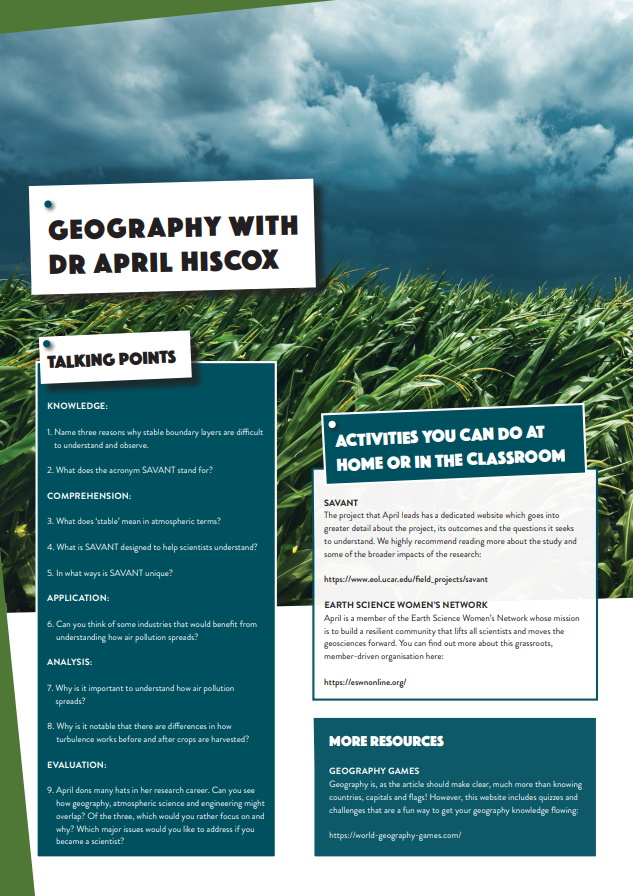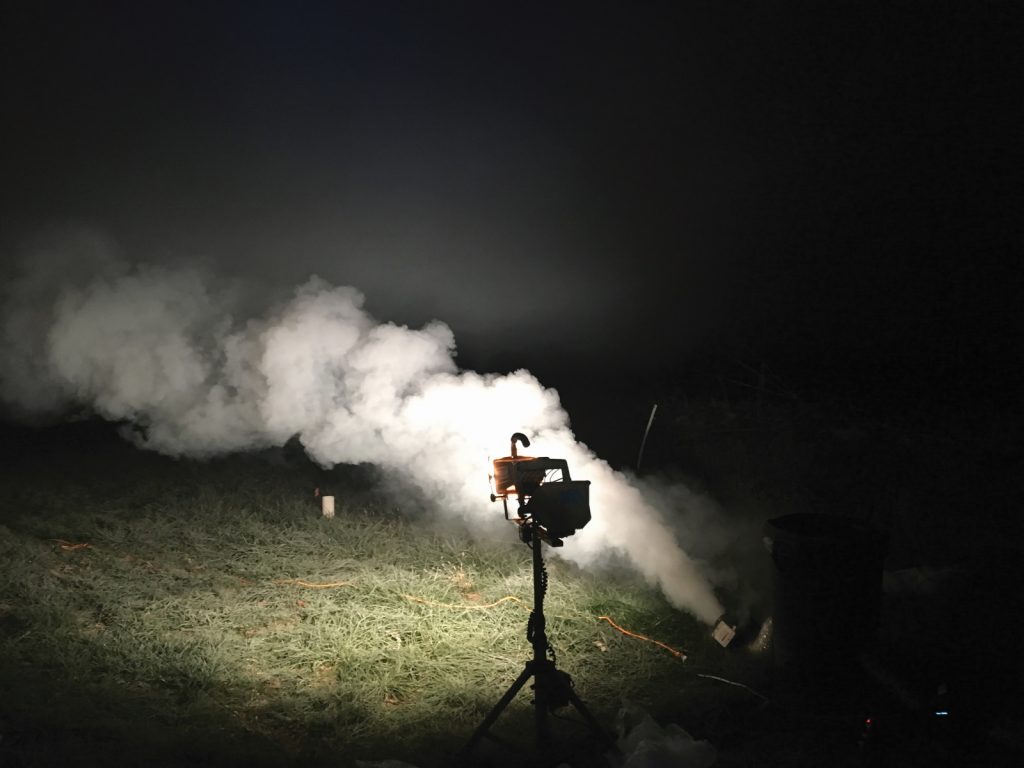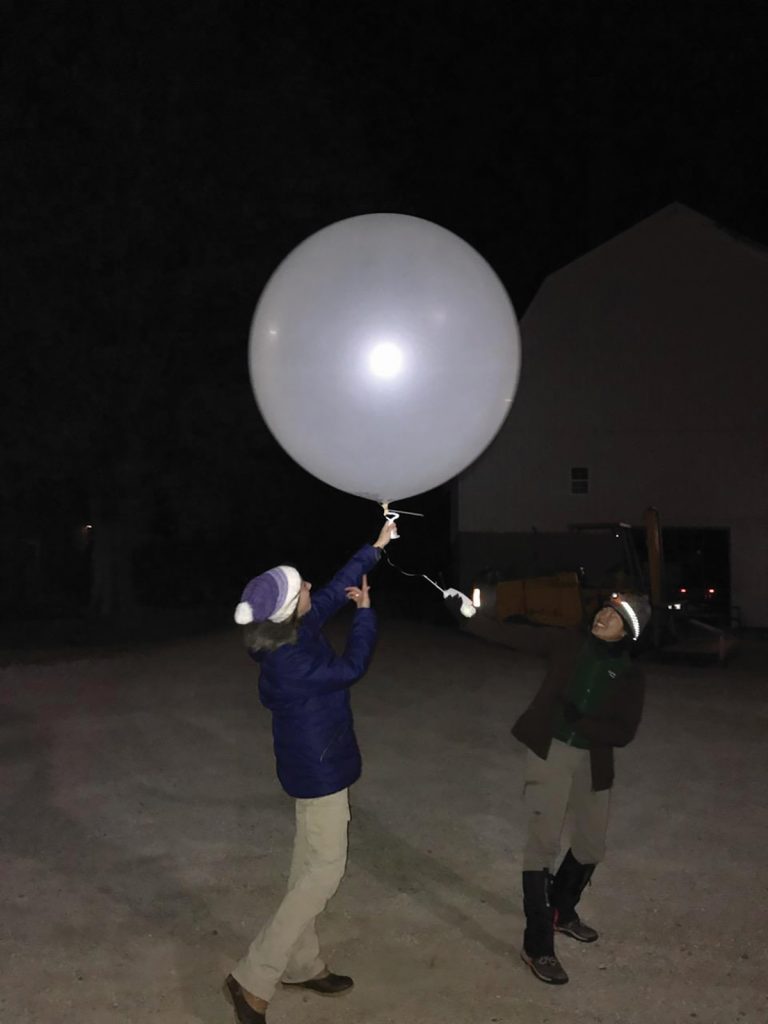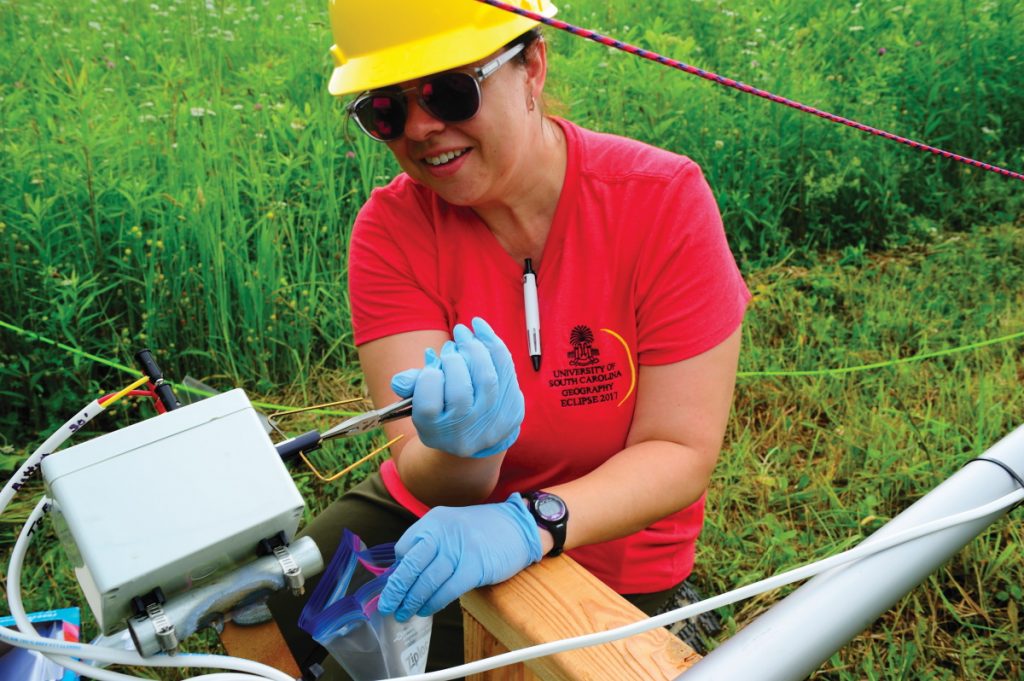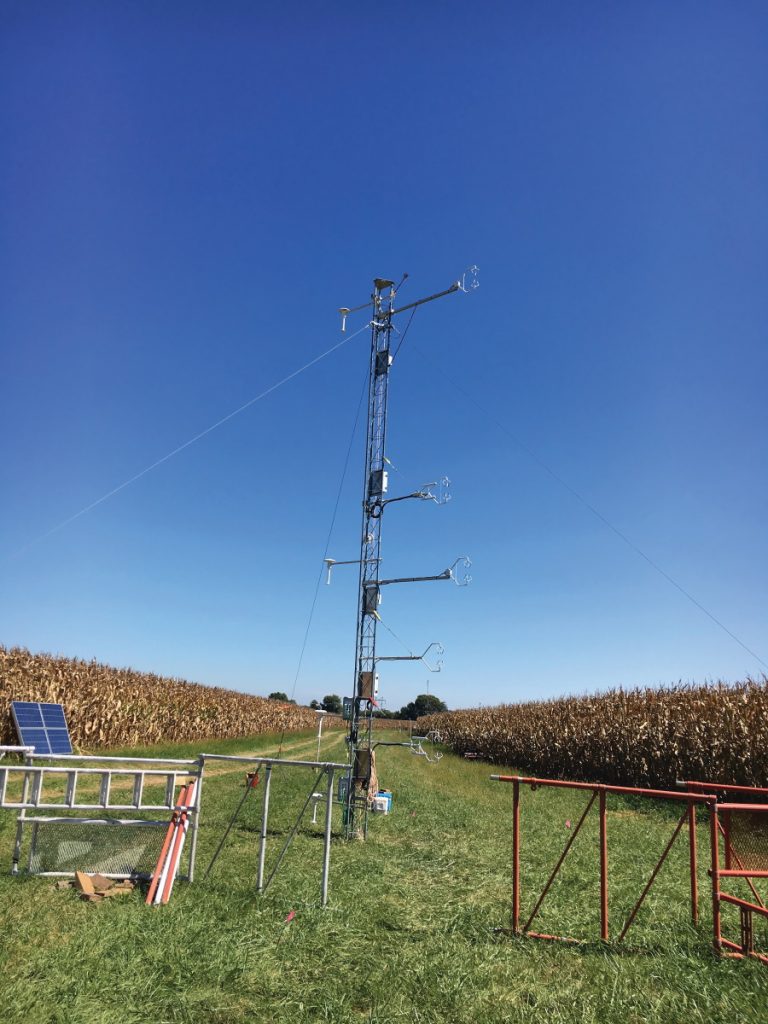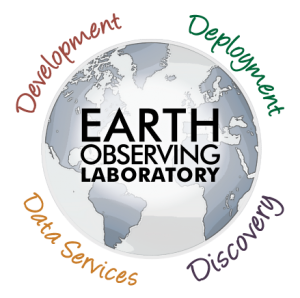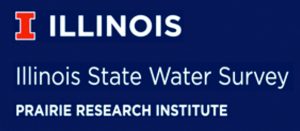Understanding how air pollution spreads
Dr April Hiscox, based at the University of South Carolina, USA, is one of the principal investigators of the SAVANT Project, which looks at how air moves at night near the Earth’s surface. The findings will provide insights into how air pollution spreads, and help to enhance improve agricultural operations
TALK LIKE A GEOGRAPHER
STABLE BOUNDARY LAYER – a cool layer of air adjacent to a cold surface on the Earth, where the temperature within that layer increases with height above the ground
AEROSOL DISPERSION – the process by which particles are spread out while they remain airborne
INTERNAL GRAVITY WAVES – gravity waves that occur in the interior of a fluid rather than its surface
KATABATIC DOWNSLOPE WIND – a wind that carries high-density air from a higher elevation down a slope under the force of gravity
MESOSCALE – an intermediate sized scale between those of weather systems and of microscales, on which storms and other phenomena occur
MICROSCALE – a scale on which short-lived atmospheric phenomena smaller than the mesoscale occur
TURBULENCE – fluid motion characterised by chaotic changes in pressure and flow
Above the surface on the Earth, there are layers upon layers of air which have varying temperatures and move in different ways, depending on what is happening in the particular atmosphere these layers are located within. Stable boundary layers – which are cool layers of air adjacent to a cold surface of the Earth – are one example of these layers but are notoriously difficult to understand and observe for a range of reasons.
For one thing, they are most frequent at night, so scientists are forced to stay up late in order to observe them! Secondly, they are very near to the ground, too close for typical measurements to capture with typical measurements occurring even just 10 metres from the surface. Finally, they are spatially variable, so observations have to be performed over distances, as opposed to a single measurement.
Dr April Hiscox, based at the University of South Carolina, is a geographer and one of the principal investigators of a project that is using novel methods to overcome some of the difficulties associated with understanding and observing stable boundary layers. Known as SAVANT (Stable Atmospheric Variability ANd Transport), the project will help scientists understand how air moves at night near the Earth’s surface. The findings will provide insights into how air pollution spreads and will help farmers know when it is best to apply pesticides or to deploy frost mitigation strategies.
WHAT IS MEANT BY ‘STABLE’?
In atmospheric terms, ‘stable’ means the suppression of vertical motion. “Stable does not mean no motion – in fact, the suppression of vertical motion can often enhance or complicate horizontal motion. The easiest way to define a stable layer is to say it is when there is an inversion of the normal temperature profile,” explains April. “So, instead of getting cooler, as you move away from the surface, air gets warmer. It gets cooler because the land gets cooler and cools the atmosphere just above it. By just above, I mean immediately above, like less than a centimetre of air.”
To understand the whole process at work, it is necessary to be very close to the ground to measure the starting conditions. Importantly, to gain a full understanding, it is vital that researchers measure both time and space, that is, horizontal and vertical aspects of a layer, on a small scale.
IN WHAT WAYS IS SAVANT UNIQUE?
Put simply, SAVANT is unique because of the tools and methods that the team is using. The difficulties in understanding and observing stable boundary layers mean they are often overlooked in atmospheric models. April’s work is addressing this through the use of LIDAR (light detection and ranging) systems. “Scanning LIDARs are relatively rare instruments and our team combined three in the project for one of the first times,” says April. “This made our measurements unique, but the experience itself was unique for me too; it was my first time as lead Principal Investigator and it was both fun and exciting!”
The group involved in SAVANT contained an equal number of men and women which is also a novel aspect, especially when you consider that April has often been the only woman involved in other projects. There was also a mix of international students which ensured that people from different cultures came together to achieve a common goal.
HAVE THERE BEEN ANY EXCITING FINDINGS?
Yes! The team’s measurements over various surfaces showed that removing crops from the ground has a much larger implication on the stable boundary layer than the team anticipated. There are still lots of data to be analysed, but it appears that there are major differences in how turbulence works before and after crops are harvested. This finding has potentially beneficial outcomes for farmers, as they can determine how aerosols, such as sprays, pesticides and herbicides in crops or forested environments are dispersed. Ultimately, this will help farmers avoid the aerosols drifting off course, which can be economically costly and harmful to surrounding vegetation.
WHAT ARE THE NEXT STEPS FOR THE RESEARCH?
There is still more work to be done and questions to explore, but the SAVANT project has shown it is possible to improve understanding of stable boundary layers and how they can affect the dispersal of aerosols.
One thing that April and the team are keen to do is to provide the wider community with access to the instruments they used in the project. This will help to ensure that people working in forestry, agriculture and other levels of the atmosphere can benefit too.
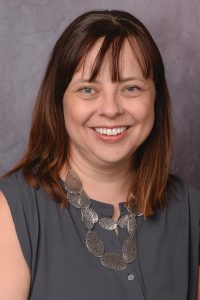 DR APRIL HISCOX
DR APRIL HISCOX
Department of Geography, College of Arts and Sciences, University of South Carolina, Columbia, USA.
FIELD OF RESEARCH: Geography
RESEARCH PROJECT: April is the lead Principal Investigator of a project that seeks to improve understanding and observation of stable boundary layers. The findings will help determine how aerosols are dispersed, which could benefit farmers and improve crop yields.
FUNDERS: National Science Foundation, US Forest Service, US Department of Agriculture
ABOUT GEOGRAPHY
Geography is the study of the physical features of our planet, its atmosphere and inhabitants, and all the complexities these bring. Over the past century or so, human activity has arguably increased the importance of geography, as scientists work to understand the precise ways in which human activity impacts Earth and the surrounding atmosphere. Indeed, without geographers it would be very difficult (if not impossible) to quantify the impacts of global warming and the resultant climate change.
However, geography is an extremely broad subject which offers a huge range of opportunities. April is a geographer, but she also considers herself to be an atmospheric scientist. When we couple that with the fact that two of her three degrees are in engineering, we can see how the sciences can be a glorious melding of separate but related concerns. As such, there is no set pathway to geography, and no pre-defined focus for a geographer.
WHAT DOES APRIL FIND CHALLENGING AND REWARDING ABOUT GEOGRAPHY?
Speaking as an atmospheric scientist, April says the most challenging aspect is having to explain to people that she does not study the weather that we see on TV every day! While she teaches the principles behind forecasting, it is not what she studies. “There are many rewarding aspects of my field of research,” says April. “However, the most rewarding is knowing that even if my work cannot tell you whether to take an umbrella out tomorrow, it can help protect our food supply and natural environment.”
WHAT ARE THE MOST PRESSING ISSUES FACING TODAY’S GEOGRAPHERS?
As we alluded to in the introduction, geographers are providing fascinating and extremely important insight into the negative impacts of human activity on our planet. However, it is worth noting that the most pressing issue will differ depending on the type of geographer you are. For April, it is climate change; from the physical changes to the world to its impact on human activity, it is fair to say that there is virtually no aspect of our lives and no topic that will not be affected by our changing climate.
Reference
https://doi.org/10.33424/FUTURUM110
TALK LIKE A GEOGRAPHER
STABLE BOUNDARY LAYER – a cool layer of air adjacent to a cold surface on the Earth, where the temperature within that layer increases with height above the ground
AEROSOL DISPERSION – the process by which particles are spread out while they remain airborne
INTERNAL GRAVITY WAVES – gravity waves that occur in the interior of a fluid rather than its surface
KATABATIC DOWNSLOPE WIND – a wind that carries high-density air from a higher elevation down a slope under the force of gravity
MESOSCALE – an intermediate sized scale between those of weather systems and of microscales, on which storms and other phenomena occur
MICROSCALE – a scale on which short-lived atmospheric phenomena smaller than the mesoscale occur
TURBULENCE – fluid motion characterised by chaotic changes in pressure and flow
Above the surface on the Earth, there are layers upon layers of air which have varying temperatures and move in different ways, depending on what is happening in the particular atmosphere these layers are located within. Stable boundary layers – which are cool layers of air adjacent to a cold surface of the Earth – are one example of these layers but are notoriously difficult to understand and observe for a range of reasons.
For one thing, they are most frequent at night, so scientists are forced to stay up late in order to observe them! Secondly, they are very near to the ground, too close for typical measurements to capture with typical measurements occurring even just 10 metres from the surface. Finally, they are spatially variable, so observations have to be performed over distances, as opposed to a single measurement.
Dr April Hiscox, based at the University of South Carolina, is a geographer and one of the principal investigators of a project that is using novel methods to overcome some of the difficulties associated with understanding and observing stable boundary layers. Known as SAVANT (Stable Atmospheric Variability ANd Transport), the project will help scientists understand how air moves at night near the Earth’s surface. The findings will provide insights into how air pollution spreads and will help farmers know when it is best to apply pesticides or to deploy frost mitigation strategies.
WHAT IS MEANT BY ‘STABLE’?
In atmospheric terms, ‘stable’ means the suppression of vertical motion. “Stable does not mean no motion – in fact, the suppression of vertical motion can often enhance or complicate horizontal motion. The easiest way to define a stable layer is to say it is when there is an inversion of the normal temperature profile,” explains April. “So, instead of getting cooler, as you move away from the surface, air gets warmer. It gets cooler because the land gets cooler and cools the atmosphere just above it. By just above, I mean immediately above, like less than a centimetre of air.”
To understand the whole process at work, it is necessary to be very close to the ground to measure the starting conditions. Importantly, to gain a full understanding, it is vital that researchers measure both time and space, that is, horizontal and vertical aspects of a layer, on a small scale.
IN WHAT WAYS IS SAVANT UNIQUE?
Put simply, SAVANT is unique because of the tools and methods that the team is using. The difficulties in understanding and observing stable boundary layers mean they are often overlooked in atmospheric models. April’s work is addressing this through the use of LIDAR (light detection and ranging) systems. “Scanning LIDARs are relatively rare instruments and our team combined three in the project for one of the first times,” says April. “This made our measurements unique, but the experience itself was unique for me too; it was my first time as lead Principal Investigator and it was both fun and exciting!”
The group involved in SAVANT contained an equal number of men and women which is also a novel aspect, especially when you consider that April has often been the only woman involved in other projects. There was also a mix of international students which ensured that people from different cultures came together to achieve a common goal.
HAVE THERE BEEN ANY EXCITING FINDINGS?
Yes! The team’s measurements over various surfaces showed that removing crops from the ground has a much larger implication on the stable boundary layer than the team anticipated. There are still lots of data to be analysed, but it appears that there are major differences in how turbulence works before and after crops are harvested. This finding has potentially beneficial outcomes for farmers, as they can determine how aerosols, such as sprays, pesticides and herbicides in crops or forested environments are dispersed. Ultimately, this will help farmers avoid the aerosols drifting off course, which can be economically costly and harmful to surrounding vegetation.
WHAT ARE THE NEXT STEPS FOR THE RESEARCH?
There is still more work to be done and questions to explore, but the SAVANT project has shown it is possible to improve understanding of stable boundary layers and how they can affect the dispersal of aerosols.
One thing that April and the team are keen to do is to provide the wider community with access to the instruments they used in the project. This will help to ensure that people working in forestry, agriculture and other levels of the atmosphere can benefit too.
 DR APRIL HISCOX
DR APRIL HISCOX
Department of Geography, College of Arts and Sciences, University of South Carolina, Columbia, USA.
FIELD OF RESEARCH: Geography
RESEARCH PROJECT: April is the lead Principal Investigator of a project that seeks to improve understanding and observation of stable boundary layers. The findings will help determine how aerosols are dispersed, which could benefit farmers and improve crop yields.
FUNDERS: National Science Foundation, US Forest Service, US Department of Agriculture
Geography is the study of the physical features of our planet, its atmosphere and inhabitants, and all the complexities these bring. Over the past century or so, human activity has arguably increased the importance of geography, as scientists work to understand the precise ways in which human activity impacts Earth and the surrounding atmosphere. Indeed, without geographers it would be very difficult (if not impossible) to quantify the impacts of global warming and the resultant climate change.
However, geography is an extremely broad subject which offers a huge range of opportunities. April is a geographer, but she also considers herself to be an atmospheric scientist. When we couple that with the fact that two of her three degrees are in engineering, we can see how the sciences can be a glorious melding of separate but related concerns. As such, there is no set pathway to geography, and no pre-defined focus for a geographer.
WHAT DOES APRIL FIND CHALLENGING AND REWARDING ABOUT GEOGRAPHY?
Speaking as an atmospheric scientist, April says the most challenging aspect is having to explain to people that she does not study the weather that we see on TV every day! While she teaches the principles behind forecasting, it is not what she studies. “There are many rewarding aspects of my field of research,” says April. “However, the most rewarding is knowing that even if my work cannot tell you whether to take an umbrella out tomorrow, it can help protect our food supply and natural environment.”
WHAT ARE THE MOST PRESSING ISSUES FACING TODAY’S GEOGRAPHERS?
As we alluded to in the introduction, geographers are providing fascinating and extremely important insight into the negative impacts of human activity on our planet. However, it is worth noting that the most pressing issue will differ depending on the type of geographer you are. For April, it is climate change; from the physical changes to the world to its impact on human activity, it is fair to say that there is virtually no aspect of our lives and no topic that will not be affected by our changing climate.
WHERE WILL APRIL’S RESEARCH LEAD TO IN THE FUTURE?
April says this is a really hard question to answer, not least because SAVANT has been her dream project ever since she was a graduate student. “As the results from SAVANT start to come in, I could take my research path in many directions,” explains April. “More stable boundary layer explorations are definitely there – we had many questions going into SAVANT and while we will answer some, more came up. My long-term hope is that we can reliably predict exactly when stable conditions will occur and where aerosols released into stable layers will end up.” As a geographer, what questions would you be asking? What would your dream project be?
HOW TO BECOME A GEOGRAPHER
• The American Geographical Society is an excellent starting point for those interested in pursuing a career in the field: https://americangeo.org/
• The American Association of Geographers contains a wealth of information on a career in geography. We encourage you to read through the site to see the opportunities out there: http://www.aag.org/
• The average salary for a geographer is $82,000, although this is dependent on an individual’s level of experience and whether they are working in the private or public sector.
HOW DID APRIL BECOME A GEOGRAPHER?
WHAT WERE YOUR INTERESTS AS A CHILD?
I was an avid reader and explorer. I loved being outside and, to this day, I love asking questions. My favourite toys were an electrical set and the very early LEGO Technic sets that had a little motor. I also love(d) to travel and see new sights – I wanted to see the whole world! My father was a science teacher, so I had an exposure to it from an early age. At the same time, I loved to create and make things; I am still a keen knitter and quilter.
WHO OR WHAT HAS INSPIRED YOU IN YOUR CAREER?
I’ve been fortunate to have many people inspire my career. My career path was a bit meandering as it took a while to find exactly which problems I wanted to solve. But I always knew that I wanted to teach in some capacity and I have my parents to thank for that. They have always been inspiring people who love what they do and were role models as educators.
There were also several teachers in high school who encouraged me to explore different options for my major beyond those typically presented to women. Similarly, I was fortunate to have some professors in college who encouraged me to go to graduate school and aim high in doing so. My MS advisor, Tim Kane at Penn State, first introduced me to LiDAR and its use in the atmosphere and, 20 years later, I am still fascinated by shooting a laser at the air! My PhD advisor, Dave Miller, inspired me to look closer to the ground, and every woman I met who has been successful in this field served as inspiration that it was possible to pursue a career in this field. One in particular comes to mind – Britt Holmen, who is currently at the University of Vermont. She was just going through the tenure process when she served on my PhD committee and I valued her candour and honesty about the experience.
WHAT ARE YOUR PROUDEST CAREER ACHIEVEMENTS?
To date, SAVANT is my proudest achievement. The experience has been wonderful – nothing quite beats the feeling of knowing that things have worked. After years of funding requests, development and planning, to know your ideas have worked is incredible. Being out late at night, making observations and having that ‘We did it!’ feeling means all the stress beforehand is worth it and you have a real sense of validation. Seeing the students who took part in the project being energised, and seeing their interest sparked is also something I am proud of that.
DO YOU HAVE ANY AMBITIONS YOU HAVE NOT YET ACHIEVED?
Yes! On the professional front, I would like to become a full professor someday. However, as I move further into my career, my biggest ambition is to address issues around diversity in STEM and form a more tangible network for women in my local community.
April is a passionate advocate for following your own path, or at least being aware that there is no set way into science and/or geography. “There’s a lot more to the world than what we might be taught in the curriculum,” says April. “School provides the foundation, but there are so many different pathways you can take and so many different connections between people and science to be made. That’s what makes it all so exciting!”
Having said this, April recommends studying maths and any science subjects – developing analytical reasoning skills will stand you in good stead for the future. She also recommends classes in basic computer programming or digital literacy. “Geography is a discipline grounded in space. That is the reason we are typically associated with maps. But we live in a digital world with increasing access to spatial data,” explains April. “The future of geography is going to be in aggregating and analysing much of that data, so understanding computers is essential.”
You’ll need a degree in a relevant subject for postgraduate study and it is worth noting that geographers need a master’s degree for most positions. Students usually choose to concentrate their courses in physical, human, or regional geography.
https://www.careerexplorer.com/careers/geographer/how-to-become/
APRIL’S TOP TIPS
1 Never be afraid to ask questions. If you do not know something, or want to learn more about a subject, then ask! Your tutors and teachers are there to tutor and teach – asking questions is a major part of that, because it shows them what you don’t know and how they can help to fill in those knowledge gaps.
2 Don’t take no for an answer. A career in science will always contain difficult moments and times when things feel too hard. But if you persevere and believe in yourself, it doesn’t matter what happens or what anybody says – you can do it.
3 Follow your passion. Being a researcher means being you. It is your unique views and curiosities that will lead to new discoveries, so knowing what you love is the best place to start.
Do you have a question for April?
Write it in the comments box below and April will get back to you. (Remember, researchers are very busy people, so you may have to wait a few days.)


